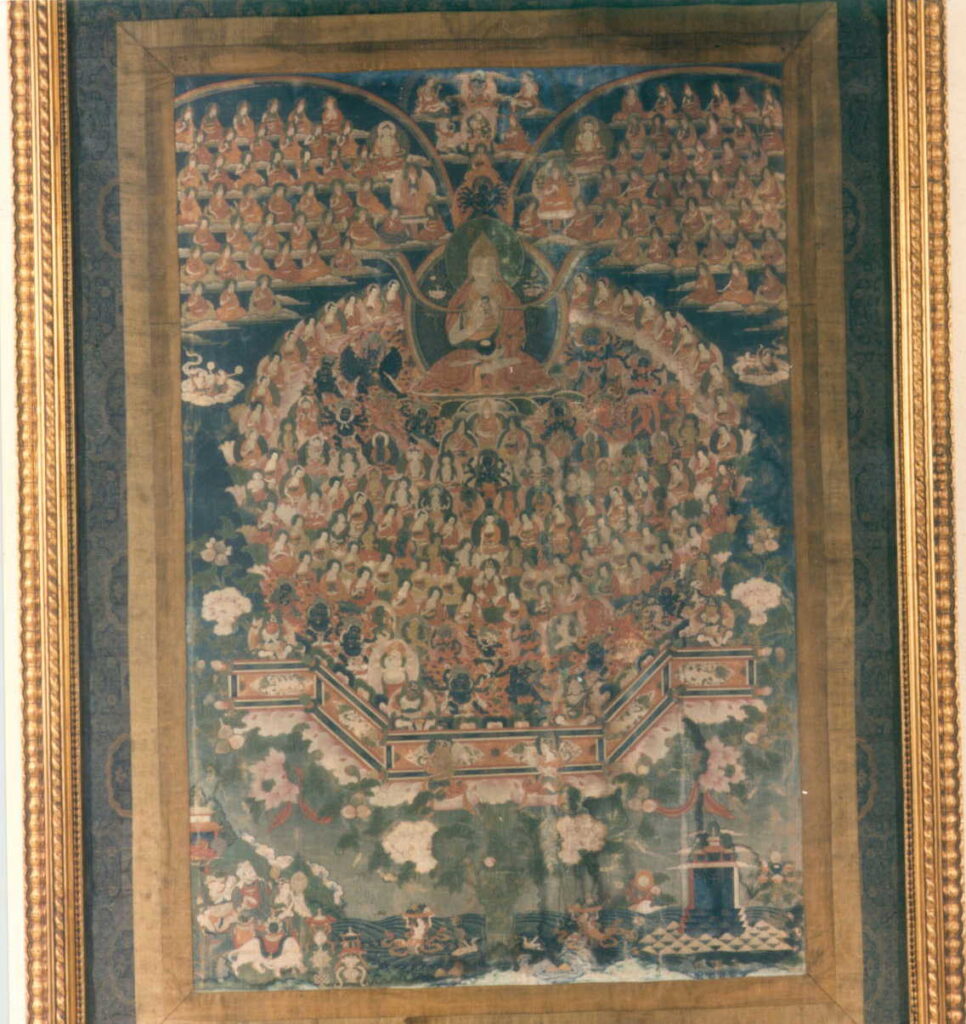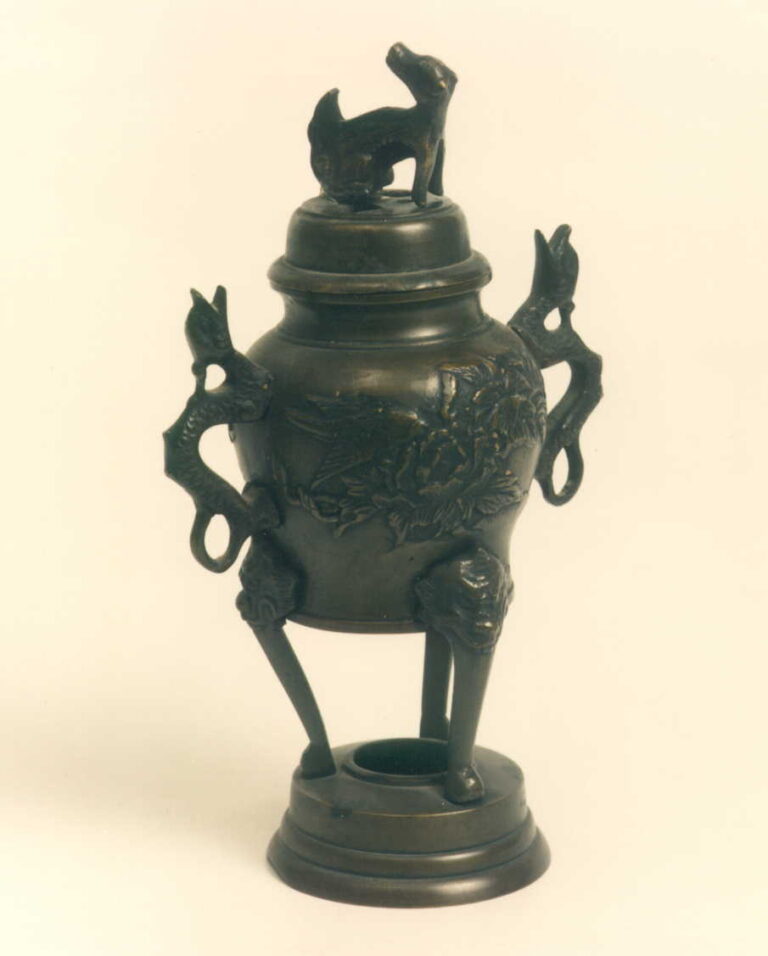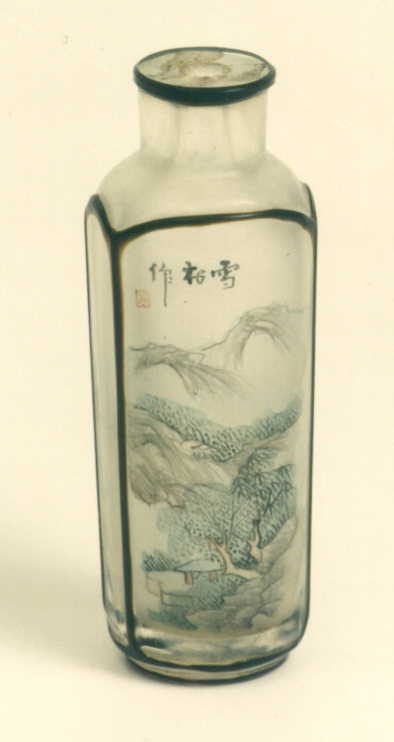TSONGKAPA AND THE GELUPA SHELTER TREE
The visual reading of the work from the lower zone, we observe how from the lower center and in an ascending direction, a tree with thick foliage emerges from the depths of the ocean. Following the axis of the trunk, the figure of Tsongkapa is portrayed with the cap of the Gelupa order and monastic clothing. Tsong Kapa is seated in the lotus posture, holding the alms bowl in his left hand, while with his right hand he performs the mudra “vitarka?mudra”. Between his hands he holds the lotus stems flanking the figure, which in turn support two characteristic attributes of Tsongkapa’s iconography, the dagger and the book. On his chest is drawn an image of Buddha, indicating his spiritual lineage. The characters surrounding Tsongkapa’s figure are grouped in three zones. Following the general geometric sense of the composition, the two groups of the upper corners group 45 figures each, flanking six main characters, which refer to the superior lineage of the founder of the Gelupa order. In the central circle the image of Tsongkapa is surrounded in a circular sense by his most faithful followers and disciples ?outer circle?, at the same time that in his closest surroundings he is protected by the guardians or Dharmapalas of the Buddhist paradise. The latter are recognized by their black faces, of animal and terrifying aspect, in defiant and protective attitude. The dharmalas on their left side embrace their partners or yakthis, in a posture loaded with symbolism, known by the name of yab?yum. Following the central axis in a descending direction are five main characters: Tsongkapa, Hejvajara, Buddha, Maitreya or Vajradara, guardians and finally the minor divinities. From the point of view of the style, this Thangka should be framed in the Chinese-Tibetan taste of the 18th and 19th centuries. The order of the composition, the architectural elements and especially the introduction of floral elements, remind us of the decorative and courtly painting done in China at the same time. / Extracted from: Isabel CERVERA FERNÁNDEZ: Fundación Rodríguez-Acosta. Asian Art Collection. Bibliography: RHIE, M.; THURMANN, R.: Wisdom and Compassion. The Sacred Art of Tibet. New York, 1992, p. 372




